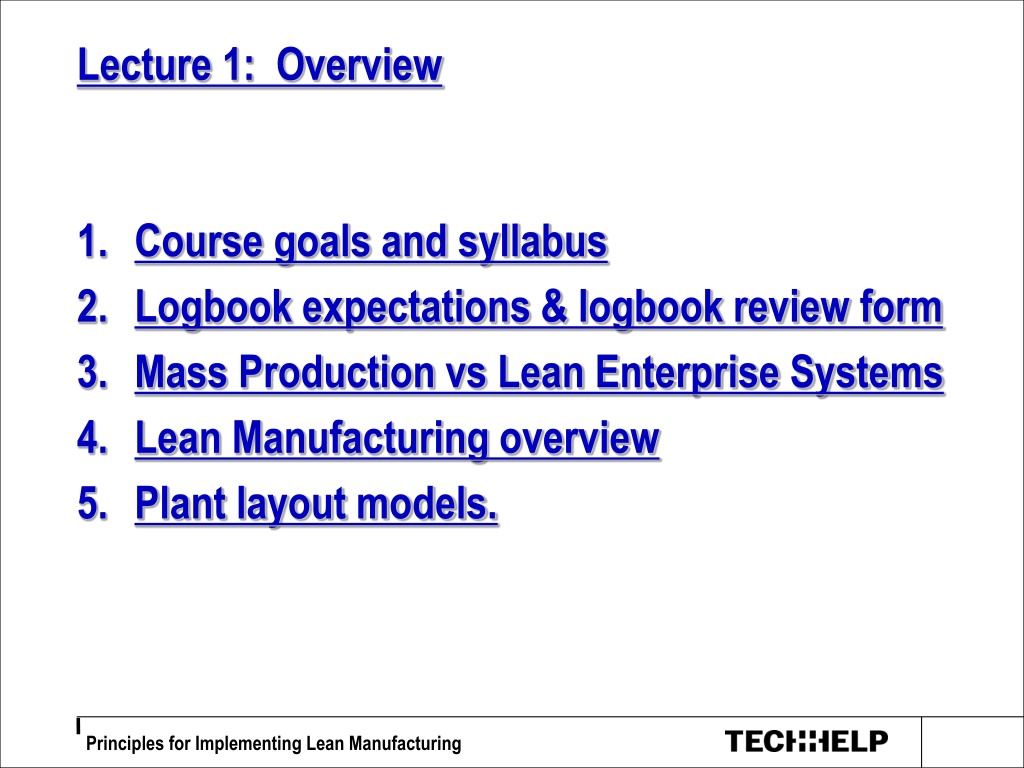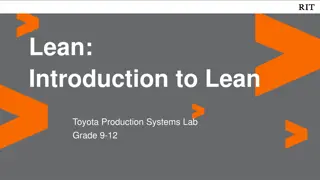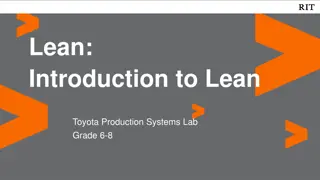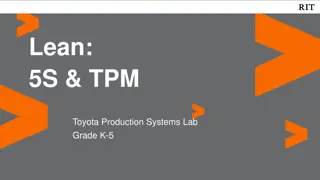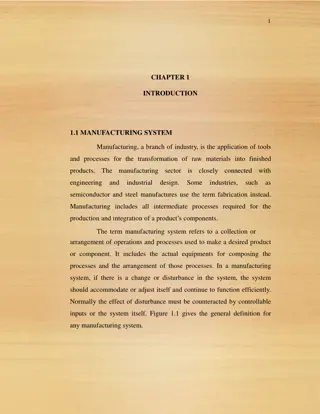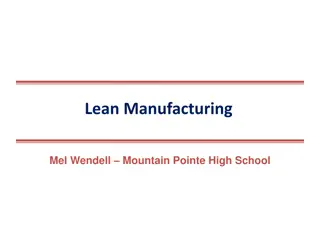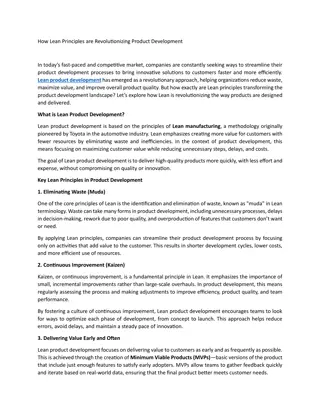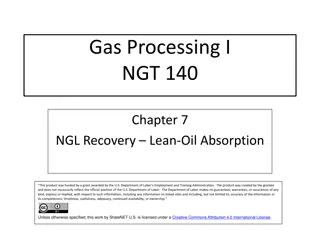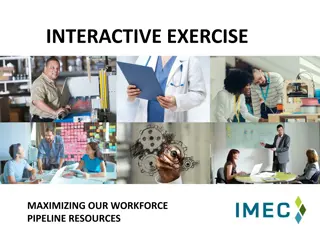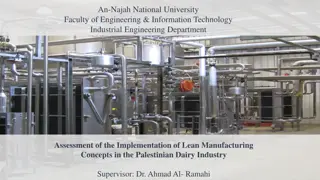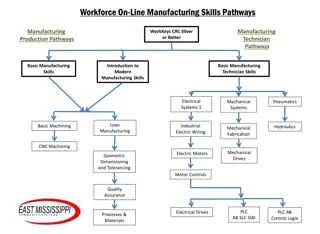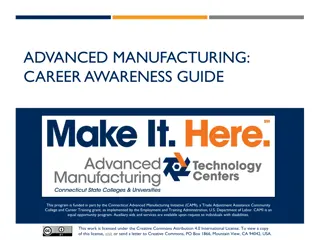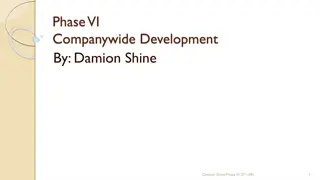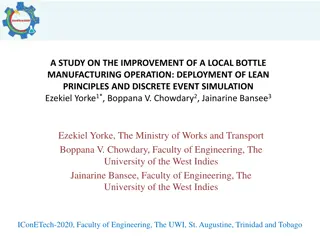Lean Manufacturing Principles Overview
Analyze the core concepts of Lean Manufacturing in a systematic approach to eliminate waste and enhance operational efficiency. Explore the contrast between Mass Production and Lean Enterprise Systems, emphasizing value-added activities, common manufacturing terms, and plant layout models for Lean implementation.
Download Presentation

Please find below an Image/Link to download the presentation.
The content on the website is provided AS IS for your information and personal use only. It may not be sold, licensed, or shared on other websites without obtaining consent from the author.If you encounter any issues during the download, it is possible that the publisher has removed the file from their server.
You are allowed to download the files provided on this website for personal or commercial use, subject to the condition that they are used lawfully. All files are the property of their respective owners.
The content on the website is provided AS IS for your information and personal use only. It may not be sold, licensed, or shared on other websites without obtaining consent from the author.
E N D
Presentation Transcript
Lecture 1: Overview 1. Course goals and syllabus 2. Logbook expectations & logbook review form 3. Mass Production vs Lean Enterprise Systems 4. Lean Manufacturing overview 5. Plant layout models. Principles for Implementing Lean Manufacturing
Mass Production System * Example: Ford * Status as of 1950 8000/day Low-skilled immigrant labor Vertical integration Abundant investment capital * High volume, low mix * Capital, Quantity, Repeatability Principles for Implementing Lean Manufacturing
Lean Enterprise System * Example: Toyota * Status as of 1950 2500/year Diversified market Limited capital Dedicated, high skilled labor * Low volume, high mix * People, Quality, Flexibility Principles for Implementing Lean Manufacturing
Definition of Lean A systematic approach to identifying and eliminating waste (non-value-added activities) in a company s operations. Lean emphasizes flowing the product at the pull of the customer. Lean is implemented through both rapid andcontinuous improvement. Kaizen- kai means little or ongoing . Zen means for the better or good. Small continuous improvements on everyone s part leads to world class manufacturing. Principles for Implementing Lean Manufacturing
Concept of Value-Added Activity Value-Added Time Any activity that increases the market form or function of the product or service. (These are things the customer is willing to pay for.) Non-Value Added Time (Waste or muda) Any activity or use of resources that does not add market form or function or is not necessary. (These activities should be reduced, integrated, simplified, or eliminated.) Principles for Implementing Lean Manufacturing
Common Manufacturing Terms: Batches Order of Operations Inventory Work in Progress (WIP) Fixturing Set-Up Time Inspection Plant Layout Manufacturing Lead Time (MLT) Principles for Implementing Lean Manufacturing
Process Layout small shop Principles for Implementing Lean Manufacturing
Process Layout - factory Ship QC Rec Raw Stock QC Screw Machine Shear Stamp Lathe Drill Assembly Brake Mill Weld Grind Finish Parts Stock Principles for Implementing Lean Manufacturing
Product Layout Products typically ride along on conveyor belts or chains. This layout may have several parallel lines of processes combining at one node. This arrangement is relatively inflexible compared to a Process Layout. Principles for Implementing Lean Manufacturing
Fixed Position Layout In this layout, the product s position is fixed due to its size or weights such as a jetliner. Equipment, components, and labor is brought to the product for the operations. When the product is complete, it is then moved. The moving assembly line used to build the market-leading Boeing 777 photo (Neg#: K63841-01) Principles for Implementing Lean Manufacturing
Cellular Layout Linking of manual and machine operations into the most efficient combination to maximize value-added content while minimizing waste. Punch De-burr Cut to size Package Form Sand Principles for Implementing Lean Manufacturing
Lean = Eliminating Waste Non-Value-Added: Hold all waste in a CLOSED MITT Value-Added Complexity Labor Overproduction Space Energy Defects Materials Idle Materials Transportation Time Typically 95% of all lead time is non-value-added Principles for Implementing Lean Manufacturing
Lean Building Blocks KAIZEN Pull/Kanban Cellular/Flow TPM Quality at Source POUS Quick Changeover Standardized Work Batch Reduction Teams Value Stream Mapping 5S System Visual Plant Layout Principles for Implementing Lean Manufacturing
